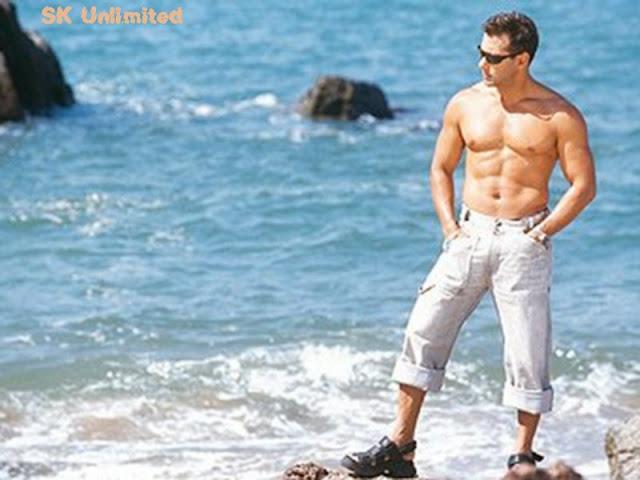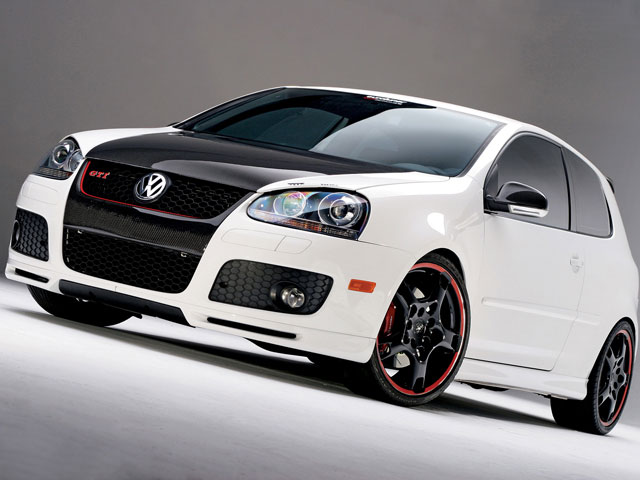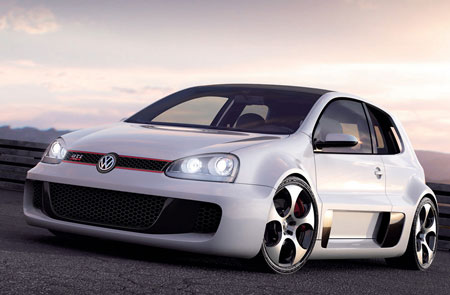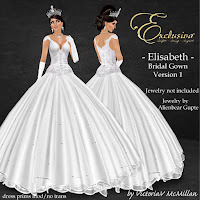

Salman Khan-Salman Khan is a Bollywood Actor
Born Abdul Rashid Salim Salman Khan
27 December 1965 (1965-12-27) (age 44)
Indore, Madhya Pradesh, India
Occupation Film actor, Television presenter, Screenwriter
Years active 1988 – present
Parents Salim Khan
Salma Khan
Website
http://www.salmankhan.net
Salman Khan; born Abdul Rashid Salim Salman Khan on 27 December 1965) is an Indian film actor who appears in Bollywood films.
Salman Khan is the son of the legendary writer Salim Khan

Salman Khan, who made his acting debut with the film Biwi Ho To Aisi (1988), had his first commercial success with the blockbuster Maine Pyar Kiya (1989), and won a Filmfare Best Male Debut Award for his performance. He went on to star in some of Bollywood's most successful films, such as Saajan (1991), Hum Aapke Hain Kaun (1994), Karan Arjun (1995), Judwaa (1997), Biwi No.1 (1999), having appeared in the highest earning films of six separate years during his career.
In 1999, Salman Khan won a Filmfare Best Supporting Actor Award for his extended appearance in Kuch Kuch Hota Hai (1998), and since then has starred in several critical and commercial successes, including Hum Dil De Chuke Sanam (1999), Tere Naam (2003), No Entry (2005), Partner (2007), Wanted (2009) and Dabangg (2010), which has become the second highest-grossing Bollywood film of all time after 3 Idiots. Khan has thus established himself as one of the most prominent leading actors of Hindi cinema.[1][2]
Contents
1 Biography
1.1 Career
1.1.1 1980s
1.1.2 1990s
1.1.3 2000s
1.2 Personal life
2 Controversies
2.1 Legal troubles
2.2 Relationship troubles
2.3 Fatwas
3 Awards and nominations
3.1 Filmfare Awards
3.2 Star Screen Awards
3.3 Zee Cine Awards
3.4 Bollywood Movie Awards
3.5 IIFA Awards
3.6 Indian Television Awards
3.7 National Honour
4 Filmography
5 See also
6 References
7 Further reading
8 External links
Biography
Career
1980s
Salman Khan made his acting debut in the 1988 film Biwi Ho To Aisi where he played a supporting role. His first leading role in a Bollywood movie was in Sooraj R. Barjatya's romantic family drama Maine Pyar Kiya (1989). The film went on to become one of India's highest grossing films.[3] It also won him a Filmfare Best Male Debut Award, and a nomination for Filmfare Best Actor Award. Maine Pyar Kiya was the biggest hit of 1989 in India, one of the most successful Bollywood movies of the 1980s, and it established Salman Khan's status in the industry.
1990s
1990 saw only one film release starring Khan, Baaghi, alongside southern actress Nagma. The film was a box office success,[4] and was followed by another successful year in 1991 when he starred in three hit films, Patthar Ke Phool, Sanam Bewafa and Saajan.[5] Despite these early successes, all of his 1992-1993 releases resulted in box office failures.
Salman Khan clawed back his previous success in 1994 with his second collaboration with director Sooraj Barjatya in the romance Hum Aapke Hain Kaun, co-starring Madhuri Dixit. This film was the biggest hit of that year, and turned out to be one of Bollywood's highest grossing films ever, becoming the fourth highest earner of all time.[6] Apart from being a commercial success, the film was widely acclaimed and Khan was praised for his performance, earning his second nomination for Best Actor at the Filmfare. Three more films released that year featured Khan, none of which making a significant impact on the box-office as was the case with the previously mentioned title. He did however win praise for his performance in Andaz Apna Apna, alongside co-star Aamir Khan, which has gained a cult status since its release. In 1995 he cemented his success with Rakesh Roshan's blockbuster Karan Arjun, co-starring alongside Shahrukh Khan.[5] The film was the second biggest hit of the year, and his role of Karan once again put his name among the nominees for the Best Actor award at the Filmfare, which was eventually won by his Karan Arjun co-star Shahrukh Khan.
1996 was followed by two successes. The first one being Sanjay Leela Bhansali's directional debut Khamoshi: The Musical, co-starring Manisha Koirala, Nana Patekar and Seema Biswas. Though a box office failure, the film was critically acclaimed. He next starred alongside Sunny Deol and Karisma Kapoor in Raj Kanwar's action hit Jeet.
He had only two releases in 1997: Judwaa and Auzaar. The former was a comedy directed by David Dhawan co-starring Karisma Kapoor, where he played a dual role of twins separated at birth. The film was a box office hit. The latter, co-starring Shilpa Shetty failed to do well, but developed a cult following after its video release.
Salman Khan worked in five different films in 1998, his first release being the comedy Pyaar Kiya To Darna Kya opposite Kajol, one of the biggest commercial successes of that year. This was followed by the moderately successful drama Jab Pyaar Kisise Hota Hai.[5] Khan played a young man who has to take a child who claims to be his son, under his custody. Khan's performance in the film earned him several positive notices and favourable reviews from critics. He rounded of the year with Karan Johar's directorial debut, Kuch Kuch Hota Hai. Co-starring alongside Shahrukh Khan and Kajol, he had only an extended cameo playing the role of Aman. However, it eventually turned out beneficial to him, as his performance earned him his second Filmfare Award under the Best Supporting Actor category.
In 1999, Salman Khan starred in three hit films: Hum Saath-Saath Hain: We Stand United, which reunited him with Sooraj Barjatya for the third time; Biwi No.1, which became the top grossing film that year; and Hum Dil De Chuke Sanam, which was a major critical success, and earned him another Best Actor nomination at the Filmfare.
2000s
In 2000, Salman Khan acted in six films, most of which failed critically and commercially, except for the two moderately successful films, Har Dil Jo Pyar Karega and Chori Chori Chupke Chupke, both of which co-starred Rani Mukerji and Preity Zinta. His performance in Chori Chori Chupke Chupke, the release of which was delayed until 2001, was received well. The film was one of the first Bollywood movies to handle the issue of surrogate childbirth; Khan played the role of a rich industrialist, who hires a surrogate mother after his wife becomes infertile. Critics noted his turn towards a more serious role, which reportedly had more substance in comparison to his previous roles.[7][8] In 2002 he starred in the delayed release Hum Tumhare Hain Sanam which was semi-hit at the box office.
Salman Khan's following releases failed at the box office until he made a comeback in 2003 with Tere Naam. The film was a major earner and his performance was praised by critics, with film critic Taran Adarsh noting, "Salman Khan is exceptional in a role that fits him to the T. He breathes fire in sequences that demand uneasiness. But beneath the tough exterior lies a vulnerable person and this facet in particular comes to the fore in the latter reels. His emotional outbursts are splendid..."[9] He subsequently continued his success at the box office, with comedies like Mujhse Shaadi Karogi (2004) and No Entry (2005).[5] 2006 was an unsuccessful year for him when Jaan-E-Mann and Baabul both failed to do well at the box office.
Salman Khan started 2007 with the ensemble film Salaam E Ishq which failed to do well at the box office. His next release Partner did very well at the box office, receiving a blockbuster verdict.[10] He next appeared in his first Hollywood movie, Marigold: An Adventure in India opposite American actress Ali Larter. Telling the love story of an Indian man and an American woman, the film was a major failure, both commercially and critically.
Salman Khan starred in three films throughout 2008, all of which underperformed,[11] though his second film of the year, Heroes, met with praise from critics.
Salman Khan hosted the second season of 10 Ka Dum in year 2009 which turned out to be even more successful than his first season as host of the game show in year 2008. The show got very high TRPs for Sony Entertainment Television and according to reports, the show helped Sony TV regain its third position in the Indian television ratings.[12]
Salman Khan's first film of 2009, Wanted directed by choreographer turned director Prabhu Deva was declared a smash hit in its first weekend of release itself. The action film turned out to be a huge success. The movie got more recognition for its slick action sequences performed by the actor himself. In the same year, he appeared in two other films, Main Aurr Mrs Khanna and London Dreams, both of which were failures at the box office.
His first release of 2010, Anil Sharma's Veer underperformed at the box office. Khan's recent film, Dabangg produced by his brother Arbaaz Khan, was released on September 10, 2010. It made a record opening at the box office[13] and was declared an all time blockbuster which is Khan's 4th time.[14]
Personal life
Salman Khan is the eldest son of celebrated screenwriter Salim Khan and his first wife Salma Khan (maiden name Sushila Charak). His stepmother is Helen, a famous former Bollywood actress, who has co-starred with him in Khamoshi: The Musical (1996) and Hum Dil De Chuke Sanam (1999). He has two brothers, Arbaaz Khan and Sohail Khan, and two sisters, Alvira and Arpita. Alvira is married to actor/director Atul Agnihotri.
Salman Khan studied at The Scindia School, Gwalior for a few years along with younger brother Arbaaz.
Salman Khan is a dedicated bodybuilder, and is famous for taking off his shirt in movies and stage shows alike. In 2004, he was voted seventh best-looking man in the world and the best looking man in India by People magazine, U.S.[15] Khan has been involved in several charities during his career.[16]
On 11 October 2007, Khan accepted an offer from Madame Tussauds wax museum in London to have a wax replica made of himself. His life-size wax figure was finally installed there on 15 January 2008, making him the fourth Indian actor to have been replicated as a wax statue in the museum.[17][18]
Controversies
Legal troubles
On 28 September 2002, Salman was arrested for rash and negligent driving. His car had run into a bakery in Mumbai; one person who was sleeping on the pavement outside the bakery died and three others were injured in the mishap.[19] Charges of culpable homicide were laid against him, but later dropped, and he was found not guilty. However, he will still have to stand trial for a series of lesser charges pertaining to the incident.[20]
On 17 February 2006, Khan was sentenced to one year in prison for hunting an endangered species, the Chinkara. The sentence was stayed by a higher court during appeal.[21] On 10 April 2006, Salman was handed a five year jail term for hunting the endangered Chinkara. He was remanded to Jodhpur jail, and remained there until 13 April when he was granted bail.[22] On 24 August 2007, the Jodhpur sessions court, upheld the 5 year jail term for Khan in the Chinkara poaching case by turning down his appeal against the 2006 judgement. At the time of the hearing, he was busy with a shooting elsewhere, while his sister attended the proceedings.[23] The day after, he was placed under police arrest in Jodhpur after a Rajasthan court upheld a prison sentence passed upon him for poaching. On 31 August 2007, Khan was released on bail from the Jodhpur Central jail where spent six days.
Relationship troubles
His turbulent relationship with actress Aishwarya Rai was a well publicised topic in the Indian media, and had constantly filled gossip columns.[24] After their break-up in March 2002, Rai accused him of harassing her. She claimed that Khan had not been able to come to terms with their break-up and was hounding her; her parents lodged a complaint against him.[25]
In 2005, news outlets released what was said to be an illicit copy of a mobile phone call recorded in 2001 by the Mumbai police. It appeared to be a call in which he threatened his ex-girlfriend, Aishwarya Rai, in an effort to force her to appear at social events held by Mumbai crime figures. The call featured boasts of connections to organized crime and derogatory comments about other actors. However, the alleged tape was tested in the government's Forensic lab in Chandigarh, which concluded that it was fake.[26][27]
Fatwas
In September 2007, a Muslim organisation issued a fatwa against Khan for attending a Ganesh puja. Stating that Islam prohibits idol worship, the organisation stated that unless Khan reads the kalmas — the declaration of faith — all over again, he will not be considered a Muslim. In addition to that, Khan celebrated the Ganesh Mahotsav with his family in Bandra; they brought a Ganesh idol for one day for the sake of his stepmother, Helen. Khan was among the group who danced in the procession. His father responded by criticising the fatwa and stated that Salman had done nothing wrong.[28]
Another fatwa was raised against Khan by a Muslim cleric in India, mufti Salim Ahmad Qasmi, for allowing Madame Tussauds in London to make a wax model of himself. The mufti said the statue is illegal and the Sharia forbids depictions of all living creatures. This created speculation in the press, as no fatwa was released against fellow Muslim, Shahrukh Khan who also has a wax model in the museum. Salman responded by saying, "These fatwas are becoming a joke".[29]
The fatwa was raised upon Khan again in September 2008, for celebrating the Ganeshotsav Hindu ceremony at his home with the family. The fatwa was raised by the member of the Advisory Council, Jama Masjid, in New Delhi. On this occasion, his father, Salim, again questioned the fatwa and criticised those who raise it




















































